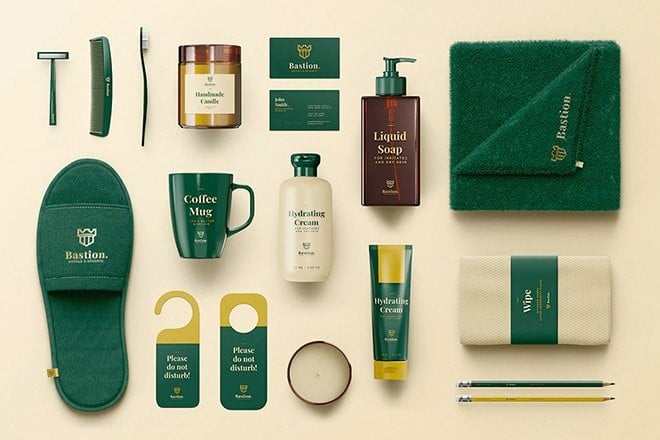
Whether you are working on a design for a client at a major corporation or posting to your own social media account, a visual brand identity makes it easy for people to see – and know – a company or person at a glance.
Establishing a visual identity is more than popping a logo on something. It’s a collection of elements – from color to typography to imagery – that establishes who you are visually.
Plenty of companies take the time to set brand identity guidelines, but have you thought about how it all comes together visually? This set of tips can help.
What is a Visual Brand Identity?
The starting point to putting together a visual brand identity is understanding how it might be different from general branding.
The answer is pretty simple: Visual brand identity is everything others can see of the brand. While visuals can convey mood and messaging, a visual brand is the foundation of what an entity looks like.
What’s great about establishing a visual brand identity is that it is a stylebook of sorts that helps you create elements and materials that look like your brand.
Think of it this way. If all of a sudden McDonald’s turned the Golden Arches blue, you’d see it but not have the same associations and immediate knowledge of what you were looking at. Visual branding ensures that every time someone sees something from a brand, they know who is it coming from.
There are a lot of elements that comprise visual branding. These seven tips should set you on the path to success.
Use Consistent Color
Go back to the idea of the Golden Arches. One of the things that people will most connect with your visual brand is color.
This includes everything from a distinct color to a specific set of colors or palette.
When it comes to online usage, you have one more color element to consider as well: Light vs. dark mode color palettes. The implication here is that you may have two similar, but different palettes, for these different interfaces.
What might be most important about color as a visual brand asset, is to use it consistently. This includes using overlays the same way, similar pairings with contrast, and visual patterns that have the same flow if there are color variations.
Certain campaigns may use a different dominant color than others or you may expand the palette for specific use. What matters is that the primary brand identity color palette should be something that resonates with and is easily identified by your followers and fans.
Establish a Typography Palette
A solid typography palette works in almost the same way as a color palette, only with text.
Typography can be tricky – and a lot of fun to work with.
You probably have two main type components to think about.
- The typefaces in your logo, which creates a visual element of its own, but those typefaces may (or may not) be used elsewhere.
- The typefaces you use for everything else, noting that you may have two sets if your primary typefaces don’t have a web version or you run into other online compatibility issues.
Replicate Graphic Elements
The nice thing about visual branding is that it can actually help you make more consistent, and efficient, design choices.
Replicate styles and elements across projects for your brand.
If you use an orange button with white text and square edges on your website, you can use the same style for buttons in ads or calls to action for printed elements.
The same is true for any other design element you might use, such as a color overlay – maintain consistent colors and percentages – or borders, style elements, and more.
Pro tip: Create all your graphic elements as vector files so you can mix and match with ease.
Image and Video Style Matters
From image choice to filters to the way photos and videos are composed and taken, the style of visual assets can help others identify your brand.
The dominant color themes in imagery can also set your brand apart.
Not every visual identity has a strong set of rules for images or video, but some do. Others may use a visual image style for a specific event or campaign, such as using black and white headshots or a circle crop for images.
You may be surprised how simple elements, when used over time, because a visual connection between your brand and the rest of the world.
Think about the illustration style that’s famous on the cover of The New Yorker, above. Would you know it by anything else in an instant?
Logo Placements Are Important
Almost every brand identity package includes a logo or family of logo elements for different uses.
Using this brand mark in a consistent manner is key. Set rules for which logo gets used if you have multiple versions. Determine when a full color versus single color option is used.
Then take it one step further. Use your logo in a common location as much as possible – such as the top left or bottom center of design pieces. And don’t forget to give it plenty of room to breathe and be seen and understood at a glance.
Design Scale and Elements
Every design element in your visual brand package should follow common guidelines in regard to size, shape, boldness, contrast, and overall scale.
The “rules” create a visual hierarchy that creates continuity across platforms for a design.
If you use oversized headlines on your website in a slab serif typeface that’s always white, why wouldn’t you use a similar treatment in printed materials, on social media, or in advertising?
By using similar elements with a consistent scale, the design is recognizable from one medium to the next. That’s the whole goal of visual branding – to create recognition no matter where the design appears.
Create Brand Identity Mockups
Finally, you can design brand identity mockups – or use a mockup template – to establish a visual style that’s easy for teams to see. If you are working on a visual brand alone and will do all of the implementation, this tip probably isn’t relevant.
But if you work with a team and multiple people will work on visual elements for a brand, having a set of mockups that show best practices makes understanding visual style that much easier. (Show, don’t tell.)
Mockups can be elements that you design and have ready for the team, a giant artboard of ready-to-use components in Illustrator or another tool, or a collection of brand materials that worked well and are the ideal basis for replicating.
Conclusion
A visual brand identity is key for any business or individual that wants to be known at a glance. It’s a little different than a dull brand identity in that all of the elements of the visual guide are rooted in actual design pieces, rather than messaging.
A visual brand identity may be part of the initial branding conversation and implemented from the start or can evolve over time. Either way, you know it is working when you can strip the logo off of a design and correctly guess who it belongs to.
Did you like the examples you saw in this post? You can find many of them at Envato Elements.










